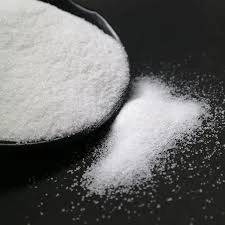Cooling Tower Water Treatment Essential Practices for Optimal Performance
Cooling towers are essential components in many industrial facilities and HVAC systems, as they help dissipate heat from cooling water used in various processes. The efficiency and longevity of cooling towers depend heavily on proper water treatment practices. Effective water treatment not only ensures the optimal performance of cooling towers but also enhances energy efficiency, reduces operational costs, and minimizes environmental impact. This article explores the key aspects of cooling tower water treatment, emphasizing its importance and the best practices involved.
Importance of Cooling Tower Water Treatment
1. Preventing Scale Formation One of the primary challenges in cooling towers is scale formation caused by the accumulation of dissolved minerals such as calcium and magnesium. As water evaporates within the cooling tower, these minerals concentrate, leading to deposits that can obstruct water flow and reduce efficiency. Proper water treatment using scale inhibitors can mitigate this issue, ensuring smooth operation and maintaining heat transfer efficiency.
2. Controlling Corrosion Corrosion is another significant concern in cooling tower systems, which can lead to damage in components such as pipes, pumps, and heat exchangers. The presence of dissolved oxygen, aggressive water chemistry, and high temperatures can accelerate corrosion. Implementing corrosion inhibitors as part of a water treatment program can protect metal surfaces, extend the lifespan of equipment, and prevent costly repairs.
3. Algae and Microbial Control Cooling towers provide a suitable environment for the growth of algae, bacteria, and other microorganisms. Biofouling can reduce cooling efficiency and create health hazards due to the potential for Legionella bacteria proliferation. Regular microbiological monitoring and the use of biocides as needed are crucial to managing microbial populations and ensuring safe operation.
4. Minimizing Environmental Impact Effective water treatment practices also contribute to reducing the environmental impact of cooling towers. By minimizing water consumption through proper cycles of concentration and managing blowdown effectively, facilities can conserve water resources. Furthermore, controlling chemical usage can reduce the discharge of harmful substances into the environment, promoting sustainability.
cooling tower water treatment pdf

Best Practices for Cooling Tower Water Treatment
1. Regular Monitoring and Testing Establishing a routine for monitoring water quality is essential. Parameters such as pH, conductivity, hardness, turbidity, and microbiological content should be regularly assessed to ensure that water chemistry remains within acceptable limits. This data-driven approach allows for timely adjustments to treatment chemicals and methods.
2. Chemicals Selection Choosing the right chemicals is critical for effective treatment. Scale inhibitors, corrosion inhibitors, and biocides should be selected based on the specific water quality and operating conditions of the cooling system. Collaborating with water treatment professionals can help facilities identify the most suitable options.
3. Blowdown Management Blowdown refers to the process of removing a portion of water from the cooling tower to control concentration levels. Proper management of blowdown can significantly reduce water and chemical waste. Facilities should establish an optimal blowdown rate to maintain water quality while minimizing losses.
4. Implementing a Water Treatment Program Developing a comprehensive water treatment program tailored to the specific needs of the facility is essential. This program should include guidelines for routine maintenance, chemical application, and emergency response to potential problems. Training staff involved in water treatment operations is equally important to ensure procedures are followed correctly.
Conclusion
In conclusion, effective cooling tower water treatment is vital for maintaining system performance, efficiency, and environmental stewardship. By preventing scale and corrosion, controlling microbial growth, and minimizing environmental impact, facilities can achieve optimal results while conserving resources. Implementing best practices in monitoring, chemical selection, blowdown management, and program development will ensure the cooling tower operates reliably and efficiently for years to come. Investing in a robust water treatment strategy is not only a matter of operational necessity but also an integral step toward sustainable industrial practices.

